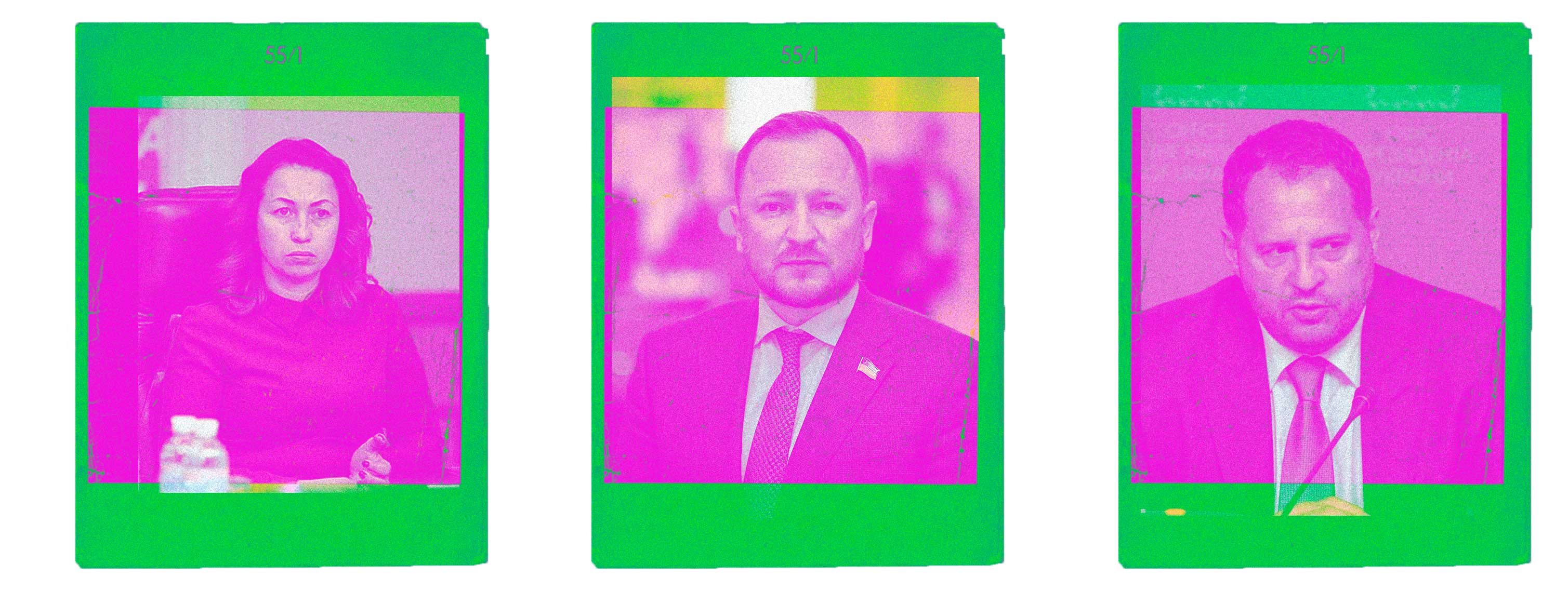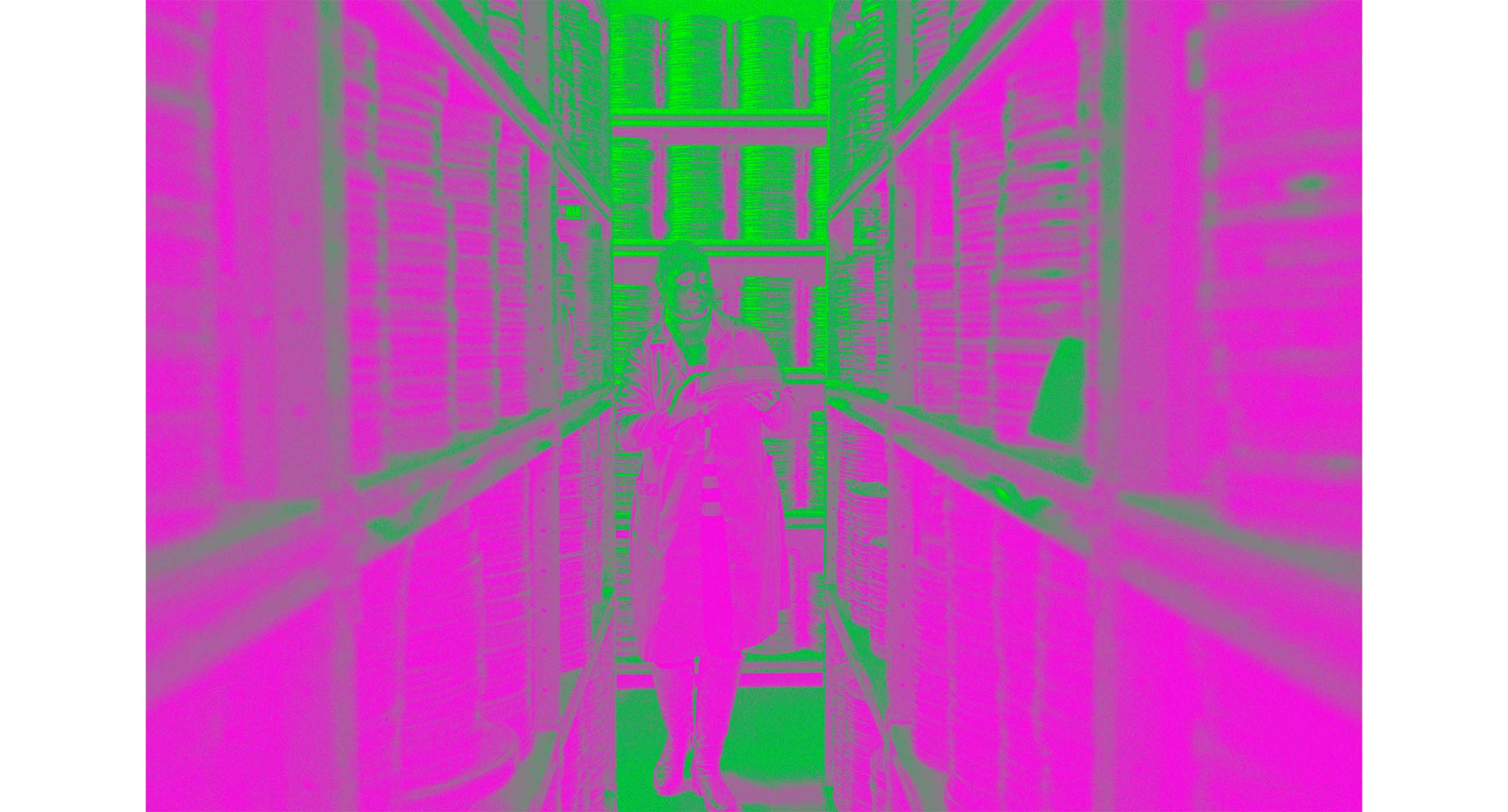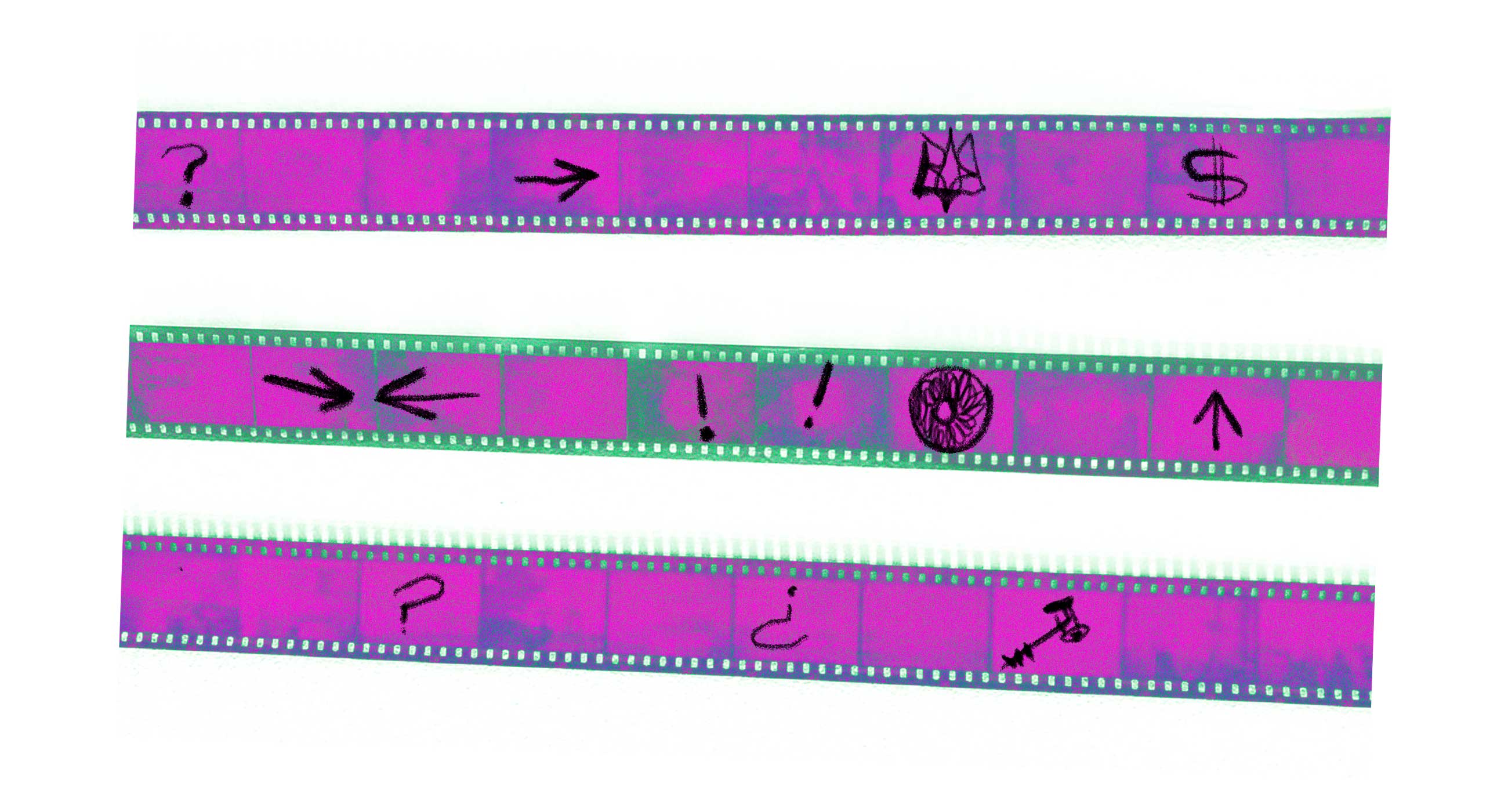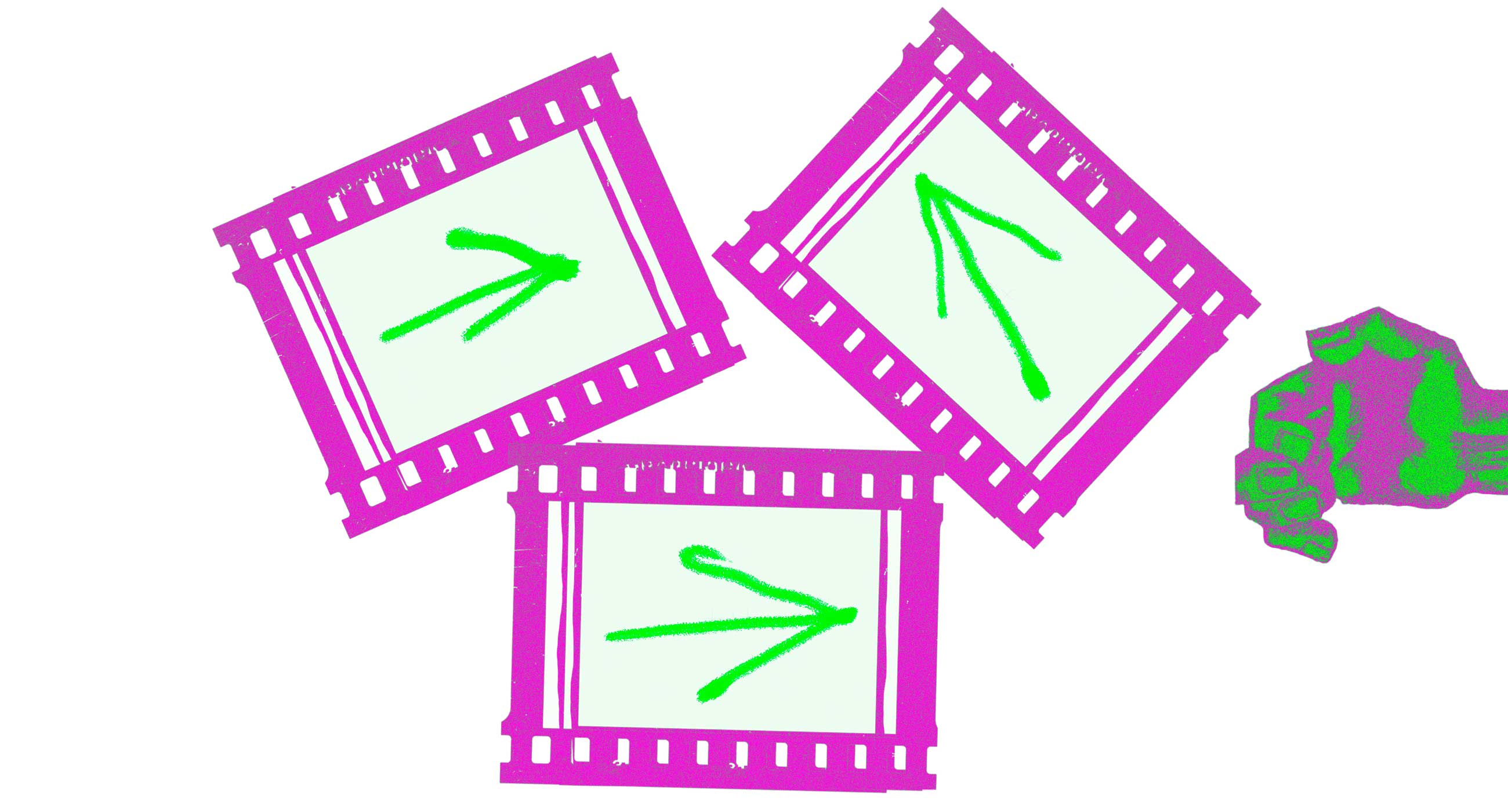What Is Happening With Dovzhenko Center? Zaborona Asked Its Former General Director Ivan Kozlenko to Speak
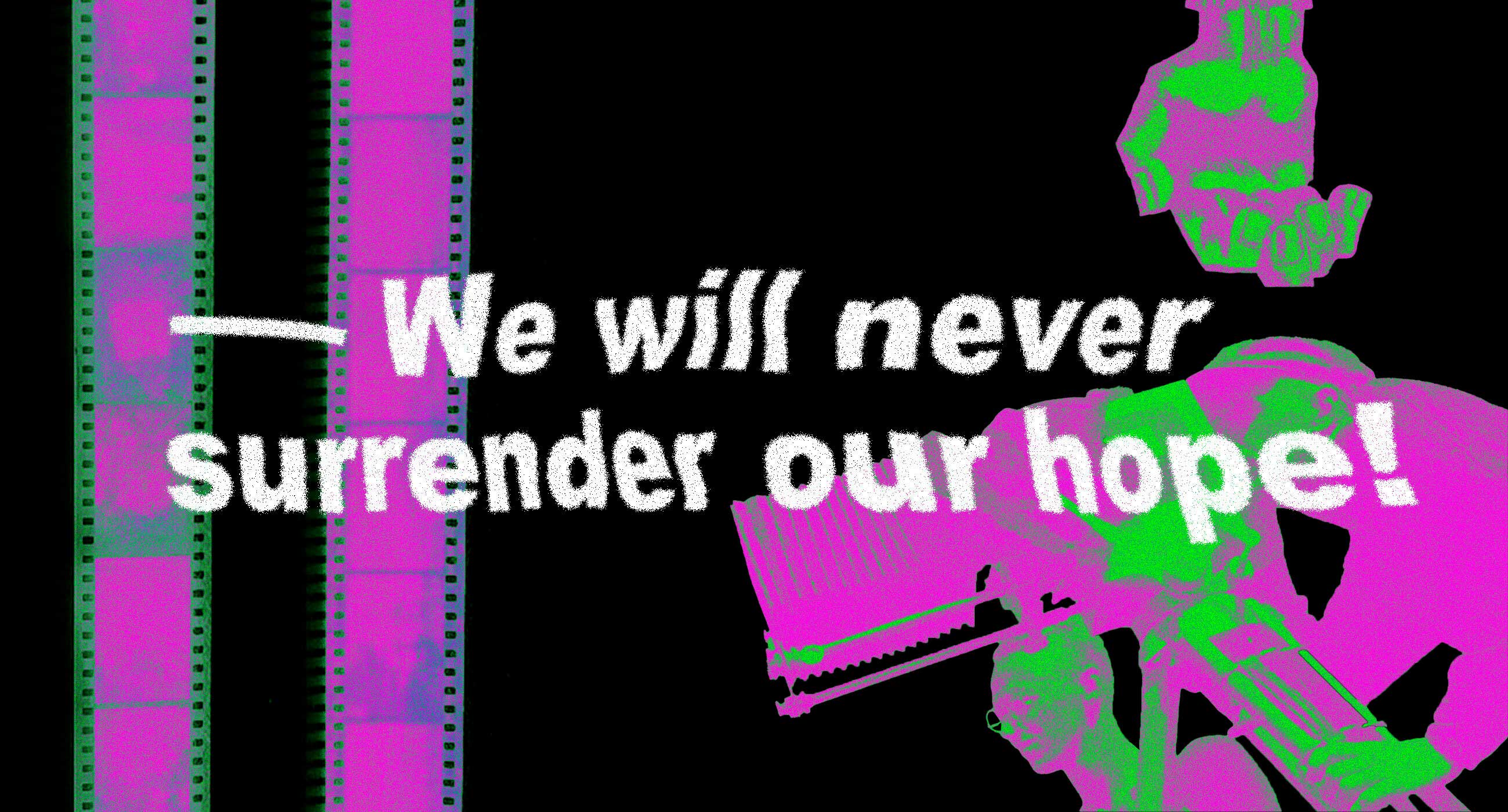
On November 12, a “Hands off Dovzhenko Center” action was in Kyiv against several questionable decisions: the appointment of a former dog trainer as general director, the dismissal of Olena Honcharuk, who held this position and was elected to it through a transparent competition, and as well as the actual raiding of the building by the authorities. Zaborona asked the former general director of the Center, Ivan Kozlenko, to explain why this is a marker of the strengthening of authoritarian tendencies in Ukraine and what corruption schemes prevail in other cultural institutions — the Ukrainian State Film Agency (Derzhkino) and the Ukrainian Cultural Fund.
On August 17, 2022, just a few weeks after Dovzhenko-Center was handed over to the Ukrainian State Film Agency, which lasted for more than a year, it issued an order for its “reorganization.” It envisages the division of the Center into three parts and the transfer of the film fund to the “meaningless institution” of the State University “Science Center of Cinematography of Ukraine.” The order did not mention the Center’s museum, archival collections, or the fate of Ukraine’s only modern film laboratory.
In the same period, the Ukrainian State Film Agency granted the State Property Fund of Ukraine consent to privatize two Dovzhenko Center buildings with a total area of almost 10,000 m², which had been under long-term lease since the end of the 1990s. In recent years, the Center’s income from renting out these buildings has almost doubled the Center’s funding from the state budget (₴ 13.6 million versus ₴ 7.6 million in 2020). With this step, Derzhkino deprived the Center of a significant portion of the income without offering compensation.
Further events are known: the authorities ignored letters from the Polish Film Academy, the Association of European Cinematheques, and leading Ukrainian cultural institutions, as well as the decisions of the Public Council under the State Cinema and the Committee on Humanitarian and Information Policy of the Verkhovna Rada with calls to cancel the reorganization, and, ultimately, the neglect of a petition to the government that collected 25,000 signatures.
Thus, the dismissal of the head of the Center, Olena Honcharuk, who won the competition for the post of general director in 2021 but was never appointed by Minister Tkachenko. The culmination is the appointment of the acting General Director of the Center, Yulia Kazhdan, founder of a canine company and hypnotherapist; searches and attempts to “deliver” her to the workplace with the help of the SSU, the police, and the prosecutor’s office. After all, there was a report about the mining of the territory near the Center during a protest action against the destruction of the Center by the authorities.
-

Photo: Olena Honcharuk / Dovzhenko Center. Collage: Kateryna Kruglyk / Zaborona
All these events are reminiscent of the worst repressive tactics of Yanukovych’s time, with the only difference that everything that is happening now is happening during the war, in which not only Ukrainian citizens are dying, but also cultural monuments of Ukraine that ended up on the front line or in occupation. At the same time, the cultural institution, the custodian of the national film fund, is destroyed by specific government representatives.
The initiators and ideologues of the struggle against the Center, which became a struggle with civil society, are well-known. Maryna Kuderchuk, a product of Bankova street, appointed as the head of Derzhkino against the results of the competition, was an auditor in the past, far from cinema. Pavlo Sushko, from “Servants of the People.” The head of the OP is Andriy Yermak, who controls the entire film industry and its resources. And Minister Tkachenko is “never responsible for anything” and, in violation of the law, did not appoint Honcharuk as director after her victory in the open competition.
-

From left to right: Maryna Kuderchuk, Pavlo Sushko, Andriy Yermak. Photo: Wikimedia. Collage: Kateryna Kruglyk / Zaborona
The conflict surrounding Dovzhenko Center became fundamental precisely because of the infamous “reorganization” of Derzhkino during the war, due to which film production almost stopped. Instead of looking for alternative funding sources through Western funds, supporting cinematographers with work, and, given the favorable situation, promoting Ukrainian cinema abroad, Derzhkino set out to “reform” Dovzhenko Center. According to experts, one of the few successes of cultural institutions of Ukraine, which implements modern management strategies, scientific research, and interaction with audiences.
The unprecedented resistance of civil society is explained not only by the repressive methods of “taming” a wayward institution but also by the fact that Dovzhenko Center is only a link in a long chain of new post-Maidan institutions “reformed” (read: destroyed) by the authorities.
It all started with Derzhkino, where after the appointment of Kuderchuk, Soviet management methods prevailed, and unprecedented corruption spread. After the reshaping of the institution, previously known for its transparency and democracy, Derzhkino turned into a club of close friends and business partners: the Council for the Support of Cinematography was by Yermak’s business partner Artem Kolyubayev, and its members included representatives of “Kvartal 95” elected with violations of procedures and television lobby. The first decision of the Council was to review the results of the pitching of film projects in favor of its own or friendly projects (so, for example, the Council supported the financing of the joint project of Pavel Sushka and Film.Ua “Myrnyi 21”, for which the results of the project rating were neglected).
Following Derzhkino, which was purged under the slogans of “inefficiency” and “unprofitability” of state-funded films, the Ukrainian Cultural Fund (UKF), a post-Maidan institution that provided state grants in the field of culture on a competitive basis, fell under the pressure of “reformers.” The UKF, contrary to its function, was initially used as a “pad” to distribute so-called institutional grants from the “covid fund.” Although this idea came from a lobby close to the Office of the President and was legislated by Minister Tkachenko, the latter soon decided to remove the Foundation’s executive director, Yulia Fediv, from her position precisely because of the “illegal distribution of institutional grants.”
-

Yulia Fediv. Photo: Wikimedia. Collage: Kateryna Kruglyk / Zaborona
Meanwhile, Tkachenko’s deputy Rostyslav Karandeev directed the election of members of the Supervisory Board of the Ukrainian Football Federation, which included the director of “Servants of the People” Oleksiy Kiryushchenko, the “negotiator” of the Kuchma and Yanukovych era, Oleksandr Suslensky, and representative of the television lobby Yuriy Artemenko. On the second attempt, the Supervisory Board “elected” archivist and historian Vladyslav Berkovskyi as the executive director of the Foundation at the competition, who was tried to be used by the already mentioned Kuderchuk and Sushko in a dirty attempt to remove Anatoly Khromov from the position of the head of the State Archives.
It was Berkovsky who became the ideologist of the “restructuring” of the Center, indicating its main direction to Derzhkino. With the zeal of a Komsomol member, he invented a way to bring Dovzhenko Center “in line with the current legislation,” namely to push it into the Procrustean bed of the Law on the “National Archive Fund and Archive Institutions” — an almost verbatim copy of the Russian law “On the Archive Fund of the Russian Federation,” adopted by the Verkhovna Rada in 1993.
Here it is worth returning to the history of film archiving in Ukraine.
-

Employees work at Dovzhenko Center, Kyiv, Ukraine, January 30, 2020. Photo: Oleksandr Rupeta/NurPhoto via Getty Images. Collage: Kateryna Kruglyk / Zaborona
In 1932, due to Stalin’s centralization in Ukraine, the All-Ukrainian Photofilm Archive was created, where photos and chronicle materials were to be stored. With the appearance in 1938 of the All-Union Film Repository (since 1948 — the State Film Fund of the USSR), all feature films that had been stored in the storage of production studios were transferred to the newly formed institution, where the negatives of all new films were subsequently transferred.
The principle of dividing the single medium of cinema into two different jurisdictions (the photo film archive was in the structure of the KGB, and the Gosfilmofond was in the structure of Derzhkino) is a purely Soviet practice, later spread to some countries of the social camp. It is related to the function defined for cinema by the Soviet authorities. This function is propaganda. If, in feature films, the authors still had some opportunity to show their creativity, even if the requirements of socialist realism strictly regulated it, then in chronic and documentary movies, the authorities determined the plots and narratives. What, when, for whom, and how to film was determined by the state, constructing the fake reality of the USSR through non-fiction cinema. Collective farm exploits, labor heroics, gigantic constructions, and education of Soviet youth were the backbone of the plots of “chronic” and “documentary” cinema until the 1960s, which was based on the distortion of reality through staging. Add here a photo from which, thanks to retouching or editing, skillfully removed the newly appeared “enemies of the people,” “Japanese spies,” and “traitors” — and you will get an idea of the Soviet photo-cinema archive.
Under the conditions when the content and form of film plots were determined not by the author but by the party, the Soviet “documentary” film remained a film purely formally, according to the principle of production and reproduction (camera, film, projector). Since the task of Soviet cinema was not to show but to construct reality, such a film “documented” something that did not exist. That is why it acquired the name “document” in Soviet legislation — something produced in the process of implementing the functions of the state and devoid of authorship. In the Soviet paradigm, such a film was not considered a work of art. The archive of such “films” reflects not the history of the film process but the history of censorship, repressive interference in creativity, and its suppression.
That is why film and photo-recording archives in the Soviet and post-Soviet periods remained closed, and regime objects with limited access. Instead, feature films were recognized as art (albeit engaged) created by the authors: the director, cameraman, screenwriter, and composer; that is, it was the object of intellectual property rights.
In 1994, Dovzhenko Center was established as the Ukrainian national film archive by the decree of President Kuchma on the initiative of Yuriy Ilyenko, Anna Chmil, and Serhiy Trimbach. Thus, Ukraine gained subjectivity in forming national memory: films were no longer sent to the metropolis for storage. With the appearance of Dovzhenko Center, not only games and animations but also documentaries and chronicle films began to be transferred to it for lifelong storage. It was a progressive step that finally eliminated the artificial division of cinema into feature and non-feature cinema, introduced by Soviet censorship.
Even though the Law on the “National Archival Fund and Archival Institutions” adopted in 1993, following the Russian example, required the transfer of documentaries to the cinema-photo-recording archive, this norm was not followed in practice after the appearance of Dovzhenko Center. Because it was Dovzhenko Center that became the prototype of an integrated national film archive, where cinema was studied as film art and not as a function of propaganda. As an open film archive institution, which, in addition to preservation, was engaged in research, popularization, and restoration of national cinema, Dovzhenko Center was accepted into the International Federation of Film Archives in 2003.
After Dovzhenko Center reformation in 2015-2018, it was transformed into a film archive per the principles of international legislation. In its structure, a film museum, a film publishing house, and a media library were opened, film storages were expanded, and the only film copying laboratory in Ukraine was supplemented with a digital cycle.
The concept of reforming the Center was modeled on the example of the world’s leading film archives: Cinematheque Française, EYE Film Institute, Filmoteca de Catalunya, and BFI. However, unlike them, Ukrainian legislation neither in the field of archival affairs nor in the field of cinema corresponded with the international one. After a complete inventory, accounting, and description of the Center’s collection, its parts fell under the scope of various laws, which made the work of the institution more difficult. Therefore, in 2016, during the preparation of the draft law “On state support of cinematography,” I wrote in it an article on the creation of a state film fund as an institution that would unite the film funds of Dovzhenko Center and the cinema-photo-recording archive. It is how I hoped to overcome the de facto artificial separation of non-playable movies from feature films implemented by Dovzhenko Center.
-

Collage: Kateryna Kruglyk / Zaborona
In 2017, the long process of merging the two film archives of Poland — Filmoteca Narodowa and Narodowy Instytut Audiowizualny — into a single national film archive, FINA, based on the game film archive, was completed. Based on this logic and model, we planned the merger of two Ukrainian archives based on the Dovzhenko Center film fund. At the same time, we tried to enter the Center’s film fund into the Register of Scientific Heritage Objects to protect it from disorganization during the transition period (unfortunately, without success).
In the future, Derzhkino, under the leadership of Kuderchuk, manipulatively used the provisions of the law on the state film fund, designed to consolidate the entire Ukrainian film heritage in one institution, against the “Dovzhenko Center.” Instead of securing the statute of the state film fund through by-laws, it took advantage of legislative uncertainty to destroy the institution by dividing it into several smaller ones. The attempt to squeeze Dovzhenko Center into archival legislation is a step that brings the entire film archival sphere of Ukraine back into the force field of post-Soviet legal norms developed for censorship control. And suppose such a step is relevant to the nature of power in authoritarian societies. In that case, it does not correspond to the nature of a democratic society, the Ukrainian one.
The conflict surrounding Dovzhenko Center is thus also a worldview conflict. The victory or defeat of Dovzhenko Center as an institution founded and functioning on a democratic basis will determine the different dynamics of the entire cultural process in Ukraine: will culture remain a sphere of free creativity and dialogue or a sphere of state control and censorship?
Attempts to control the free flow of ideas and limit the film archive autonomy of Dovzhenko-Center resulted in accusations from the State Cinema that it is allegedly not an archive in the sense of Ukrainian legislation. It is not true according to the norms of Ukrainian legislation, archives can be based on legal and natural persons on any form of ownership, and archives founded by enterprises and organizations in the field of archival affairs, which is Dovzhenko Center, are included in the system of archival institutions of Ukraine.
Of course, the conflict between the authorities and Dovzhenko Center is not limited to differences in humanitarian strategies. He would only have touched a part of the power vertical if Dovzhenko-Center was also a vital material asset. For decades, the Center’s existence was under threat due to the presence of non-core assets it inherited from the Kyiv Film Laboratory. Most of them — 10 of the 14 buildings of the Center — were expropriated and sold in 2007 at an open auction, and in 2017 the new owner started construction of a residential and commercial complex in their place.
-

Collage: Kateryna Kruglyk / Zaborona
The other two buildings of the Center, which were rented out, contrary to the Center’s intentions to use them to preserve the film fund, should be sold soon, according to the decision of Derzhkino. Of all the Center’s assets, only the central building with an area of 15,000 m² will remain, where all the current components of the Center have concentrated: the film museum, the media library, the film fund, the film laboratory, the cafe and the performance area “Scene 6”.
Given that the Center was de facto financed from the income from the rental of buildings, by agreeing to their privatization, Derzhkino kills two birds with one stone: it eliminates the actual independence of the Center. It dooms it to quick bankruptcy, eventually leading to the sale of the Center’s main building.
The head of the Derzhkino Kuderchuk has already stated that next year Derzhkino did not provide for the financing of subordinate institutions in the state budget, particularly Dovzhenko Center. Therefore, in 2023, the Center will be deprived of both sources of income: state subsidy and rental income.
I would like us to realize the hopelessness of the situation for Dovzhenko Center. Even if Derzhkino cancels the infamous order No. 100 on its reorganization, even in the case of the appointment of the legal winner of the competition Olena Honcharuk as its director, the actions of Derzhkino and MCIP have prepared it for the fate of bankruptcy in the first half of 2023, because Derzhkino did not include in the budget its funding for the next year, while depriving him of his rental income.
In the current circumstances, only one thing can save Dovzhenko Center: the resignation of the head of Derzhkino Kuderchuk and the appointment of a competent person who thinks strategically and is a reputable specialist in the field of cinema to this position. It will save Dovzhenko Center and the entire Ukrainian film industry, which is currently in stagnation. The struggle for Dovzhenko Center is noble and symbolic at the same time. Still, any victory that does not end with the resignation of Kuderchuk and the appointment of a specialist will be pyrrhic.
The case of Dovzhenko Center is the front of the struggle for democracy, autonomy of cultural institutions, transparency, and accountability. Therefore, it is not surprising that the situation around the Center revealed what most Ukrainians do not want to notice: the government’s authoritarian tendencies, which (naturally) intensified during the war. Preventing them from developing after the victory is a joint task of Ukrainian civil society and cultural institutions, among which Dovzhenko Center is now, without exaggeration, a symbol of democracy.


